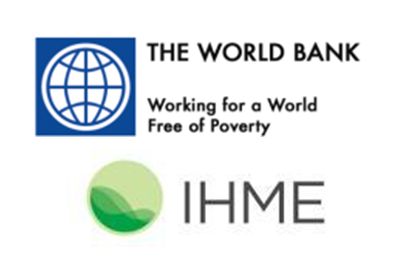Despite welcome progress, childhood diseases remain major threat in sub-Saharan Africa
WASHINGTON, September 4, 2013 – Children in sub-Saharan Africa are now less likely to die from diarrhea and pneumonia, but these illnesses are still the most common causes of childhood death and sickness in most African countries, according to a new report published today.
Loss of health due to diarrheal diseases dropped 34% between 1990 and 2010, lower respiratory infections (LRIs) such as pneumonia dropped 22%, and protein-energy malnutrition was down 17%. Several countries documented striking progress, with Malawi reducing diarrheal diseases by 65%, Burundi decreasing LRIs by 44%, and Benin reducing measles by 84% during this time.
Malaria and HIV/AIDS were the leading causes of premature death and disability in 2010 for the region. But in some countries, there has been significant progress in recent years. Between 2000 and 2010, Rwanda recorded a 56% decrease in the rate of healthy years of life lost from malaria, while Botswana cut the rate of premature death and disability from HIV/AIDS by 66%.
These are some of the findings from the new report The Global Burden of Disease: Generating Evidence, Guiding Policy – Sub-Saharan Africa Regional Edition, published today by the World Bank and the Institute for Health Metrics and Evaluation (IHME).
“The rapid shifts in disease burden place poor people in low- and middle-income countries at high risk of not having access to appropriate services and incurring payments for health care that push them deeper into poverty,” said Timothy Evans, Director of Health, Nutrition, and Population at the World Bank Group. “The data in these new reports are critical inputs to the efforts of policymakers in countries towards universal health coverage that aim to improve the health of their people, communities, and economies.”
The report also finds that nutritional deficiencies were the leading cause for disability in childhood, mental and behavioral disorders accounted for the most illness during adolescence and young adulthood, while musculoskeletal disorders were the largest drivers of disability in adulthood.
In the region’s upper- and middle-income countries, non-communicable diseases emerged as a significant health threat. From 1990 to 2010, substantial increases in premature mortality and disability were recorded from stroke (up by 31%), depression (up by 61%), diabetes (up by 88%), and ischemic heart disease (or coronary artery disease, up by 37%). Amidst the region’s rapid economic growth, early death and illness from road injuries increased by 76% between 1990 and 2010. Health loss from interpersonal violence also climbed during this time, particularly in the Democratic Republic of the Congo and Lesotho.
“The health landscape in sub-Saharan Africa is changing in unexpected ways,” said Dr. Christopher Murray, IHME Director and one of the lead authors of the GBD study. “Addressing chronic disease and certain communicable diseases will continue to be important, but people in sub-Saharan Africa are dealing with a greater range of illnesses today that aren’t fatal but are definitely disabling.”
The report also identifies trends in leading risk factors that cause the most disability in the region. Under-nutrition during childhood and household air pollution were among the leading factors behind premature death and disability.
Detailed findings for Sub-Saharan Africa and each country in the region are available online in a series of country profiles and data visualization tools.
Contacts:
World Bank Group: Melanie Mayhew, +1 (202) 459-7115, mmayhew1@worldbank.org
IHME: Rhonda Stewart, +1 (206) 897-2863, stewartr@uw.edu
The World Bank Group and Health, Nutrition, and Population
The World Bank Group is a vital source of financial and technical assistance to developing countries around the world, with the goals of ending extreme poverty and boosting shared prosperity. Improving health is integral to achieving these goals. The Bank Group provides financing, state-of-the-art analysis, and policy advice to help countries expand access to quality, affordable health care; protect people from falling into poverty or worsening poverty due to illness; and promote investments in all sectors that form the foundation of healthy societies.
The Institute for Health Metrics and Evaluation
The Institute for Health Metrics and Evaluation (IHME) is a global health research organization at the University of Washington that provides rigorous and comparable measurement of the world’s most important health problems and evaluates the strategies used to address them. IHME makes this information widely available so that policymakers have the evidence they need to make informed decisions about how to allocate resources to best improve population health.
Stay with Sierra Express Media, for your trusted place in news!
© 2013, https:. All rights reserved.






